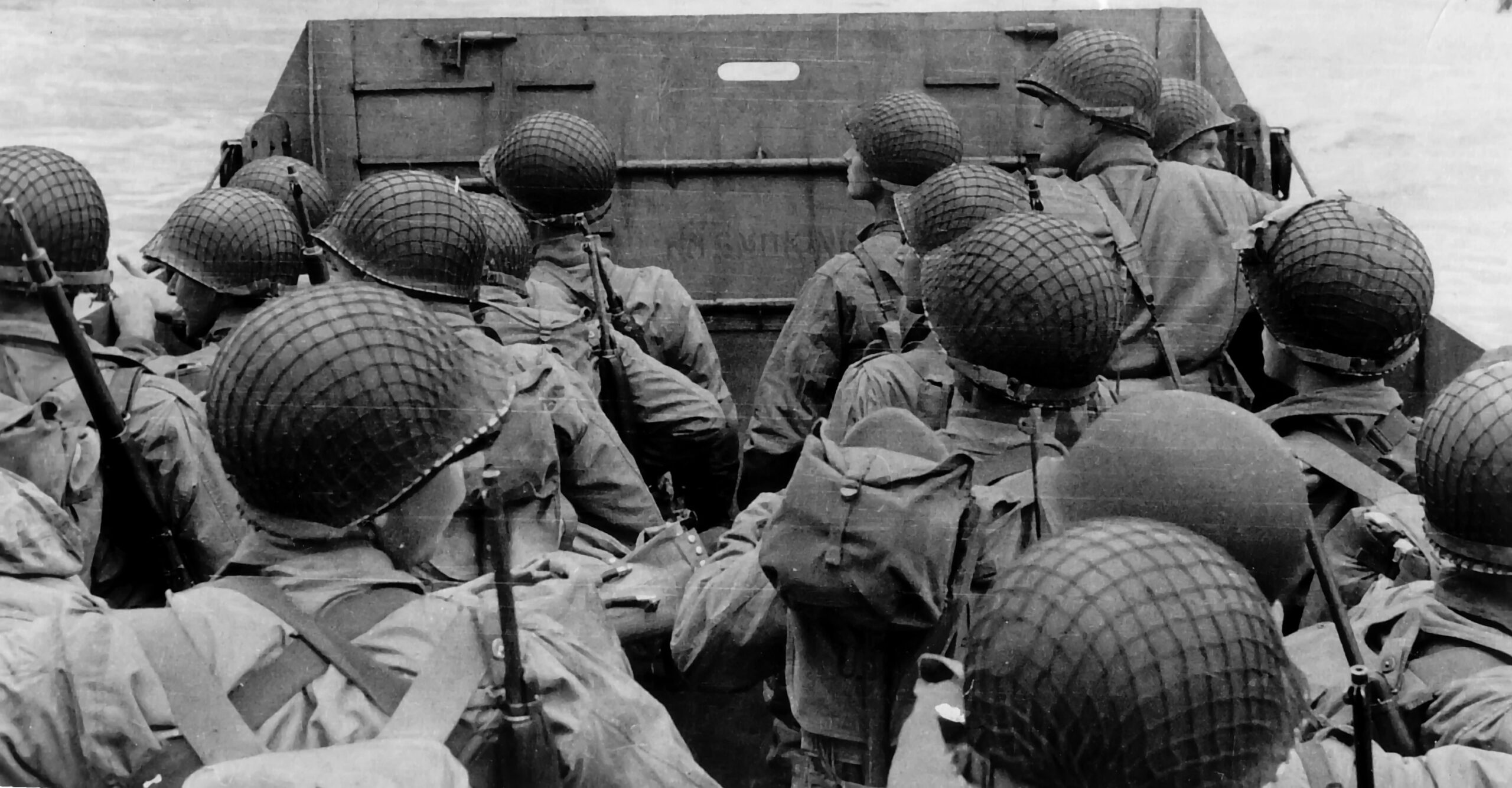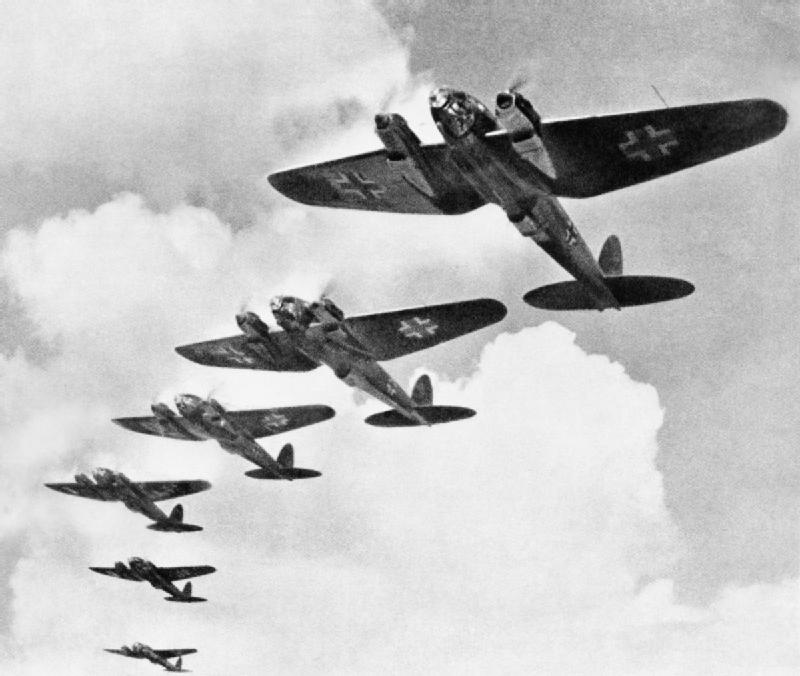
War Begins
War Begins
At daybreak on September 1, 1939, mechanized German forces broke across the Polish border, while German bombers and fighters attacked Polish railroads from the air. On September 17, Russia attacked Poland from the east. Within three weeks, Poland was overrun.

The key to Germany’s success was a new military strategy known as blitzkrieg (lightning war). Blitzkrieg stressed speed, force, and surprise; Germany ripped through its adversary’s defenses by closely coordinating air power and mechanized ground forces.
Britain and France declared war on Germany on September 3, 1939, two days after the German invasion began. But the two countries did little while Poland fell. France moved its troops to its famous Maginot Line, a supposedly invincible line of defensive fortification built to protect France’s eastern border. No fighting took place in late 1939 and 1940, leading people to call this a “phony war.”
Then in April 1940, German freighters sailed secretly into Norway’s major ports, as well as the port of Copenhagen, Denmark’s capital. Their holds were filled with German troops. The Danes, taken completely by surprise, surrendered in two hours; the Norwegians held out until June, when they, too, capitulated. British troops had tried to assist Norway, but were forced to retreat due to a lack of air support. British Prime Minister Neville Chamberlain was forced to resign following the Norway debacle. He was replaced by Winston Churchill, who since 1932 had been warning people about the danger Hitler posed. Upon becoming prime minister, Churchill told the British people that he had nothing to offer them but “blood, toil, tears, and sweat” in their fight to resist foreign aggression.

In May 1940, Hitler began his assault on Western Europe. He outflanked France’s Maginot Line by attacking Belgium, Luxembourg, and the Netherlands before driving his forces into France. Luxembourg surrendered in one day and Holland in five days. A British expeditionary force rushed across the English Channel to try to stop the German offensive. However, a German tank thrust forced the British to retreat to the French seaport of Dunkirk. With the British force nearly surrounded, Hitler had a chance to crush his opponents. But Britain’s Royal Air Force held off German bombers long enough to allow a flotilla of yachts, ferries, and fishing boat to evacuate 338,000 allied troops across the English Channel.
British forces had been driven from the continent. Worse yet, they had been forced to leave their weapons and tanks behind. Britain turned to the United States for help. President Roosevelt responded to the Dunkirk disaster by ordering U.S. military arsenals to send all available war material to Britain to replace the lost equipment.
During World War I, France held out against the Germans for four years. This time, French resistance lasted two weeks. Germany began its assault on France on June 5. A German troop entered Paris on June 14. On June 22, a new French government, made up of pro-German sympathizers, was set up at Vichy. In just six weeks, Germany had conquered most of continental Europe.
Next, Hitler sought to occupy Britain. Convinced that Britain would negotiate with him in order to keep control of its empire, Hitler decided against an immediate invasion. Churchill, however, refused to bargain. Defiantly, he told his people that he would resist any German assault: “We shall fight on the beaches…we shall fight in the streets…we shall never surrender.”

Hitler was furious. First, he unleashed German submarines against British shipping. Then, in July, he sent his air force, the Luftwaffe, to destroy Britain from the air. At the time the assault began, the Royal Air Force (RAF) had just 704 serviceable planes, while Germany had 2,682 bombers and fighters ready for action. Throughout July and August, the Luftwaffe attacked airfields and radar stationed on Britain’s southern and eastern coast. Next, in September Hitler shifted strategy and began to bomb civilian targets in London. These air raids, known as the blitz, continued through the fall and winter. In May 1941, the blitz ended. While outnumbered, the RAF had won the Battle of Britain. Churchill expressed his nation’s gratitude with the famous words: “Never in the field of human conflict was so much owed by so many to so few.”
Having failed in his bid to destroy Britain with air power, Hitler shifted strategy and invaded the Soviet Union. The attack, which began on June 22, 1941, violated the German-Soviet nonaggression pact. Hitler’s goal was to seize Soviet food and oil and to capture slave labor for Germany. At first, the Nazi war machine seemed invincible. By fall, Hitler’s armies had overrun the grain fields of Ukraine and were approaching Moscow and Leningrad. But instead of pressing ahead toward Moscow, as his generals advised, Hitler decided to seize Leningrad and occupy the Ukraine. By the time he was ready to advance on Moscow, temperatures had plunged to forty degrees below zero. In the frigid cold, German troops suffered frostbite, and their equipment broke down.
The week between December 6 and 11, 1941, proved to be one of the most pivotal in the entire war. On December 6, Soviet forces repulsed the German attack on Moscow. This was Hitler’s first military defeat. The next day, Japanese forces attacked the American naval base at Pearl Harbor, Hawaii, bringing the United States into the war. On December 11, Hitler declared war on the United States.